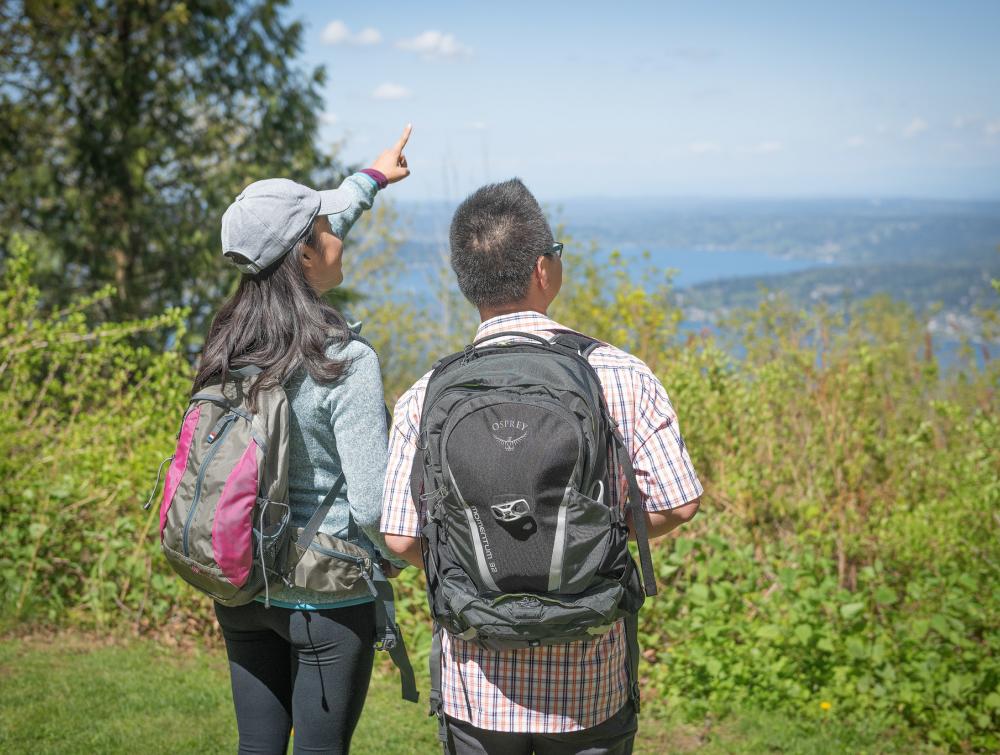New study maps transit-to-parks equity; shows south King County has greatest need and opportunity

Hikers in King County, Washington
Mason Cummings, TWS
Analysis shows new way to think about equitable access to the outdoors by exploring public transit networks
The Wilderness Society published a new report that maps public transit routes to parks throughout King County, Washington and spotlights “Opportunity Areas” where investments would go the furthest in ensuring all residents have fair access to quality outdoor spaces. Using in-depth geospatial analysis, The Wilderness Society and CORE GIS layered parks, transit and demographic data to identify patterns and gaps in transit-to-parks access.
The analysis shows that in south King County where many residents are people of color and immigrants, and many communities face greater income and health burdens than Seattleites, residents also have poorer access to parks. While 87 percent of Seattle residents live within a half mile of a park, the same is true for less than half of Tukwila and Renton residentswho live in majority-people of color neighborhoods.
"This kind of analysis can be a critical tool for helping counties and cities prioritize their investments toward communities that are most cut off from the benefits of parks." - Kitty Craig, Washington state deputy director at The Wilderness Society
According to the report, minor adjustments to transit routes and schedules could help connect park-poor communities to quality green spaces by creating better connections to community or regional parks that are within two miles of residents’ homes but are currently difficult to reach.
“Thinking about outdoor equity in terms of transit-to-parks connections is new, but this kind of analysis can be a critical tool for helping counties and cities prioritize their investments toward communities that are most cut off from the benefits of parks. King County has 260,000 acres of public land and parks – expanding public transit routes to those spaces is an important part of ensuring all residents can share equitably in the outdoors,” said Kitty Craig, Washington State Deputy Director at The Wilderness Society.
“In transit planning, too often we focus just on access to housing and jobs, without thinking about the critical public health benefits of connecting people to nature and open space. This study not only makes that connection but draws attention to the insidious fact that those historically impacted by exclusionary policies generally have poorer access to parks,” said Hester Serebrin, Policy Director at Transportation Choices Coalition. “As concerns of displacement grow, especially for communities of color, these findings help us make better housing and transit policy decisions.”
The research aligns with King County’s commitment to lead with equity and social justice in its work and The Wilderness Society hopes its findings will inform the county’s strategies around current planning and program efforts such as Trailhead Direct and the King County Land Conservation Initiative, among others.
While the report provides a good preliminary look at the transit and park networks in King County, The Wilderness Society also hopes to collaborate with community partners on a second phase of the research that would collect resident input about park needs and priorities.
“This analysis expands our understanding of what constitutes an equitable green space network. We’re excited to continue this work with the county and other on-the-ground partners to make easy access to parks and trails a reality for all King County residents. The outdoors belongs to all of us and it should reflect all of us,” said Elena Arakaki, Urban to Wild Coordinator at The Wilderness Society and lead study analyst.
CONTACTS
- Kerry Leslie, Regional Communications Manager, The Wilderness Society, (575) 644-3097, kerry_leslie@tws.org
- Elena Arakaki, Urban to Wild Coordinator, The Wilderness Society, (206) 294-7665, elena_arakaki@tws.org
The Wilderness Society is the leading conservation organization working to protect wilderness and inspire people across the country to care for our wild places. Founded in 1935, and now with more than one million members and supporters, The Wilderness Society has led the effort to permanently protect 111 million acres of wilderness and to ensure sound management of our shared national lands. Rooted in a belief that public lands should be enjoyed by and available to all, The Wilderness Society’s newest initiative, Urban to Wild, works directly with communities in the greater Seattle, Los Angeles and Albuquerque areas to identify challenges and advance smart solutions that increase access to the outdoors. www.wilderness.org.
